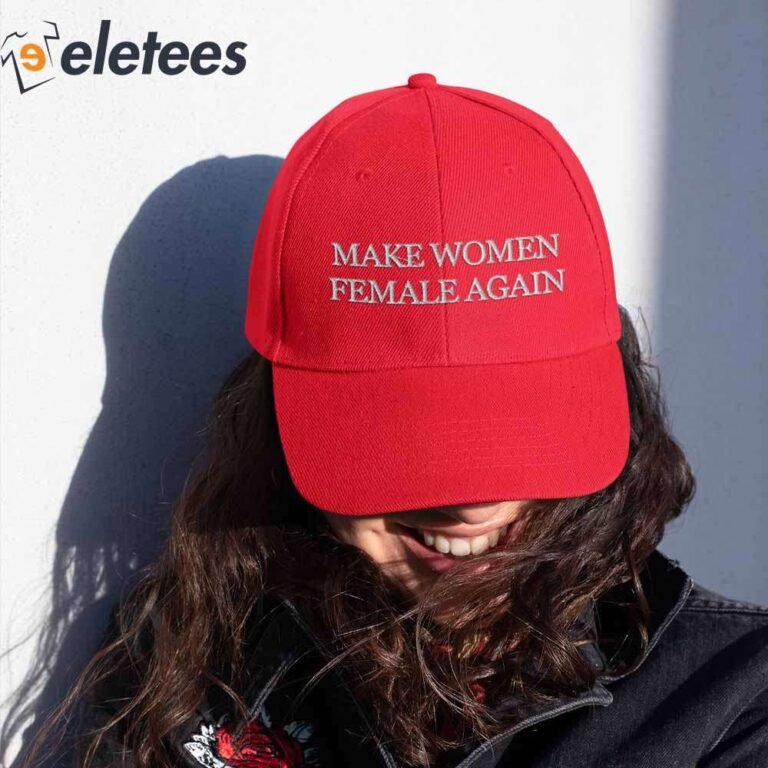Introduction
In recent years, the “Make Women Female Again” hat has sparked widespread debate and interest. This article delves into the origins, symbolism, and cultural impact of this intriguing piece of headwear, exploring its place in the broader discourse on gender and identity.
Historical Context
To understand the significance of the “Make Women Female Again” hat, we must first examine the evolution of gender roles and the women’s liberation movement. Historically, gender roles have been rigid, with distinct expectations for men and women. However, the 20th century saw significant shifts as women fought for and gained more rights and freedoms, challenging traditional notions of femininity.
The Emergence of the Hat
The “Make Women Female Again” hat first gained attention in the late 2010s, primarily in the United States. It emerged in response to contemporary debates about gender identity and roles, promoted by individuals and groups advocating for a return to traditional femininity. Key figures in this movement often highlight the perceived loss of distinct gender roles in modern society.
Symbolism of the Hat
The hat represents a call to return to traditional gender roles, where femininity is celebrated and distinctly recognized. It carries different interpretations: for some, it’s a nostalgic nod to a past where gender roles were clear-cut, while for others, it’s a controversial statement against modern gender fluidity.
Public Reception
Public reaction to the hat has been polarized. Supporters see it as a positive affirmation of traditional femininity, while critics argue it undermines progress in gender equality. Media coverage has amplified these debates, making the hat a symbol of larger societal tensions.
Political Implications
The hat is often associated with conservative political movements that advocate for traditional values. It has become a fixture at rallies and events, influencing political discourse by reinforcing traditional views on gender roles.
Cultural Impact
Beyond politics, the hat has influenced fashion and trends. It has appeared in various media, from television shows to social media posts, becoming a symbol of a broader cultural conversation about gender and identity.
Gender and Identity
The hat’s emergence has reignited debates about gender roles. While some view it as a step backward, others argue it promotes a needed discussion about the value of traditional femininity in a rapidly changing society.
Social Media and Marketing
Social media has played a crucial role in the hat’s popularity. Viral posts and targeted marketing strategies have helped it gain traction, making it a widely recognized symbol.
Merchandising and Sales
The hat’s sales have been robust, with significant popularity in conservative and traditional markets. Sales data indicate a strong demographic of buyers who resonate with its message.
Criticism and Controversy
The hat has not been without controversy. Critics argue it perpetuates outdated gender stereotypes and undermines gender equality. Supporters counter that it simply celebrates a traditional view of femininity.
Influence on Other Movements
The hat has inspired similar movements and slogans, contributing to a broader dialogue about gender roles and identity. It has become a touchstone for those advocating for a return to traditional values.
Psychological Impact
On an individual level, the hat can influence self-perception and societal norms. For some, it reaffirms their identity; for others, it represents societal pressures to conform to traditional roles.
Future Outlook
The future of the “Make Women Female Again” hat remains uncertain. It may continue to influence cultural and political conversations, or it may fade as new issues take center stage. Its long-term impact on societal norms and gender roles will be fascinating to watch.
Conclusion
The “Make Women Female Again” hat is more than just a piece of headwear; it’s a symbol of a significant cultural and political dialogue. Whether viewed as a positive affirmation of traditional femininity or a controversial relic of the past, it undeniably plays a role in contemporary discussions about gender and identity.
FAQs
What is the “Make Women Female Again” hat? The hat is a piece of headwear that symbolizes a call to return to traditional gender roles, celebrating distinct femininity.
Why has the hat caused controversy? It has sparked debate because it touches on sensitive issues of gender identity and the progress of gender equality, with some viewing it as regressive.
Who are the main supporters of the hat? Supporters are often individuals and groups who advocate for traditional values and distinct gender roles.
What impact has the hat had on fashion? It has influenced fashion trends by bringing back traditional styles and has been featured in various media outlets.
How has the hat influenced public discourse? It has become a symbol in political and cultural debates, influencing discussions about gender roles and identity.


